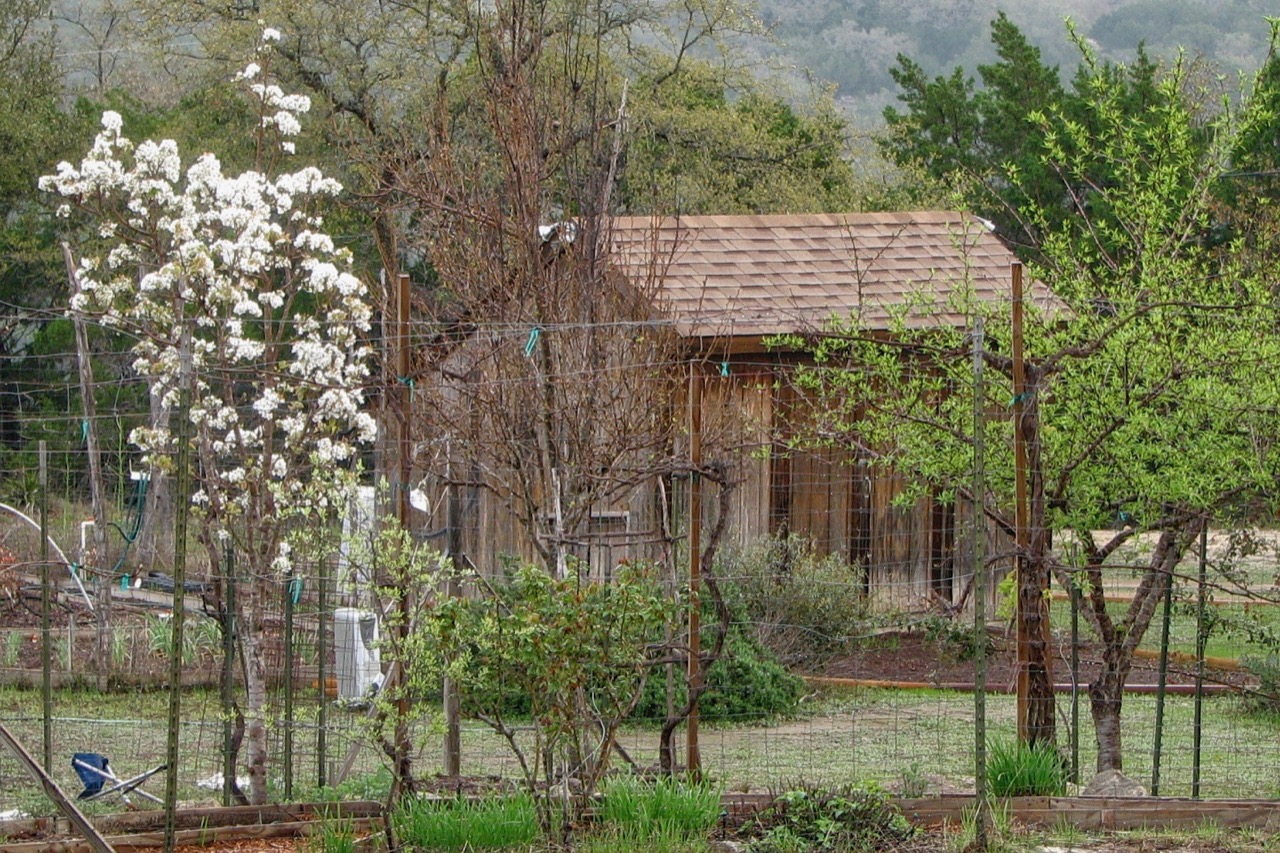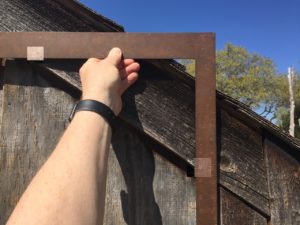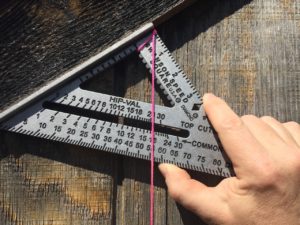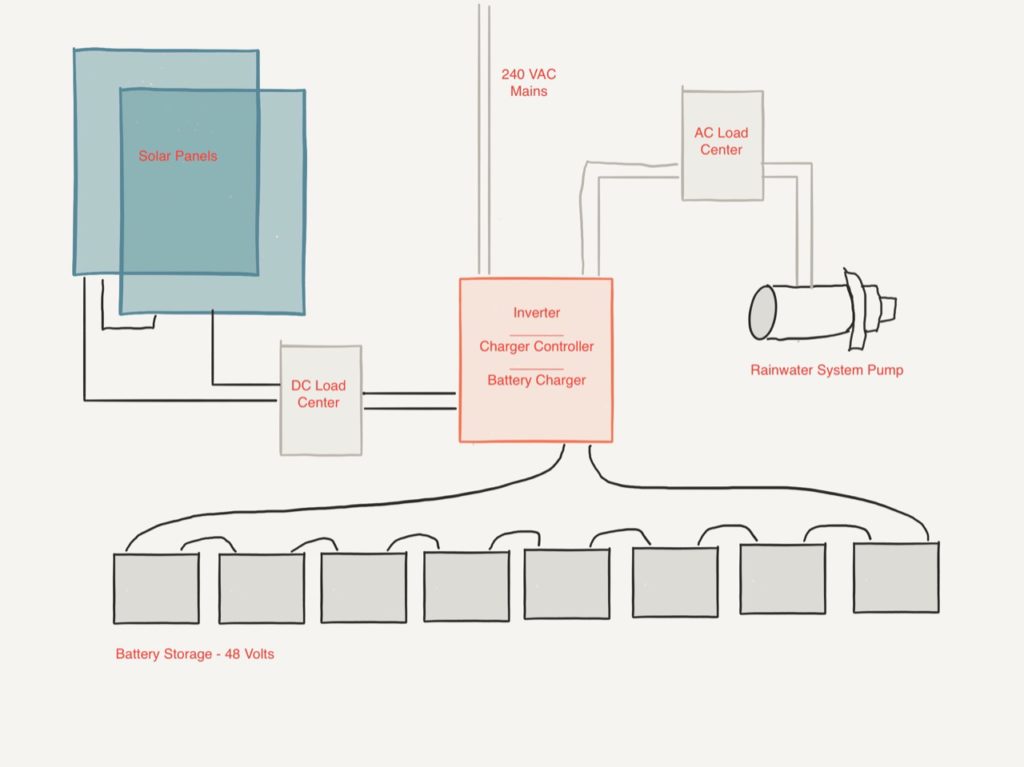Solar Power Rainwater Project – Panels and Angles
Major equipment purchase done, it’s time to think about the installation. The solar panels will be arriving in a day or two, and I plan to install them right away. Solar panels produce maximum power when the sun is perpendicular to the panel surface. We talked about solar insolation in a previous post, but the sun moves. There are several strategies for dealing with this pesky movement, from doing nothing to 2-axis tracking systems. Or course, the sun moves across the sky, but it also changes elevation during the year. The simplest and most commonly-used strategy is to fix the panels in a single direction year-round. A worthwhile improvement in solar collection can be made by changing the panel elevation two or four times a year. This is relatively easy to implement and will improve solar collection by about 5-6%. The next improvement is to have a 2-axis tracking system. This is an expensive solution and probably not worth the investment on a small system like ours. It might result in a 20% improvement in array efficiency, but simply adding another solar panel can do the same and at much lower cost.
For example, the latitude here at Roy Creek Ranch is almost exactly 30º. Using figures supplied by www.solarpaneltilt.com we learn that the optimum year-round tilt is 25.9º which results in 71.1% of optimum panel insolation. By adjusting the panel elevation twice a year (6.9º in the summer and 45.5 º in the winter) we improve the insolation to 75.2% — about 5%. Adjusting the elevation four times a year (3.3º summer, 27.1 spring/fall and 50.7 winter) only offers a slight improvement to 75.7%. Just .5% more. With the tilt fixed to the winter angle (50.7º at 30º latitude) we get relatively even power throughout the year varying from 91% to 107% of winter insolation. Interestingly, the summer setting produces the least power with this arrangement. Since the need to pump water doesn’t vary much by season, the fixed winter elevation is probably best for our application.
With these figures in mind, we turn to the actual roof where the solar panels will be installed. The building is a 10-foot by 14-foot “salt box” garden shed. It has a peaked roof along the 14-foot axis with the smaller roof facing almost due south. Perfect. This roof is about 57-inches by 107-inches so we can fit four 250-watt (64 1/2-inches by 39-inches) panels. Now we need to know the roof angle or pitch.
There are three relatively easy ways to measure the roof pitch. The first way is from the building plans. Roof pitches are generally specified in terms of “rise” and “run”, with the “run” usually specified as 12-inches and the “rise” determining the pitch. In this case, the shed roof (both front and back) has a rise of 8 and a run of 12 (an 8/12 pitch). Charts can be found on the Internet that convert rise and run to degrees. They show an 8/12 pitch is equal to 33.75 degrees. The rise and run can also be measured with a framing square, as shown in this photo.
A speed square or protractor can also be used to measure the pitch. A piece of string and a small weight such as a bolt or washer will turn the speed square into a protractor and the pitch can then be read directly. Note that the speed square reads 56º in this picture because it is measuring relative to the vertical plane. Simply subtract the reading from 90º (90º – 56º = 34º — very close to 33.75º) to convert that reading to the horizontal plane.
Finally, and most simply, you can use a smart phone to measure angles. The current iPhone has a compass app (an excellent way to navigate in the woods!) and will also measure angles on the vertical and horizontal plane. Simply launch the compass, swipe left to access the second page of the app, and measure the roof angle directly.
So the garden shed roof is about 34º. Given the relatively small gains from adjusting the elevation of a solar array, I think I’ll simply mount the solar panels directly to the roof. That will optimize for the winter months and should result in relatively even insolation throughout the year. In this case, ease of installation is the overriding factor. One other thing — the panels get hot sitting in the sun all day, and that reduces their output. By leaving an air gap behind, convection draws fresh air behind and cools them. The panels will be mounted slightly separated from the roof.






Pingback:Solar Powered Rainwater Project – to Grid-Tie, or not to Grid-Tie. (that is the question) | Roy Creek Ranch